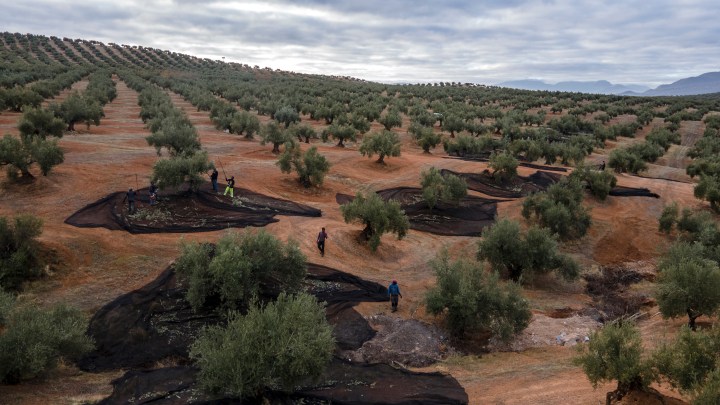
Olive oil prices climb amid drought, heat in Mediterranean
Olive oil prices climb amid drought, heat in Mediterranean

Oil prices — oil for dipping, drizzling and sautéing, that is — are spiking. The U.S. Department of Agriculture reports that prices for olive oil hit a record high this month. Drought and extreme heat in Mediterranean growing regions this summer have threatened disruptions to global supplies for the second year in a row.
Olive oil is a way of life for many in the Mediterranean, where most of the world’s supply is produced and consumed. It’s been used in cooking, skin care and traditional medicine for millennia.
Casey Corn is a food anthropologist. And, yes, her last name really is Corn. She studied in Greece and wrote her thesis on olive oil.
“It’s something that is taken for granted to a certain point because it’s just everywhere,” she said.
But in the U.S., olive oil is still a niche product, said Daniel Sumner, an agricultural economist at the University of California, Davis.
“Olive oil is expensive relative to soybeans and palm oil and sunflower,” he said. “And that lowers its use.”
Still, about 40% of households in the U.S. use olive oil. It’s increasingly showing up in specialty processed foods, like salad dressing and mayonnaise.
“You get people that want to consume it for health,” said Sumner. “It’s also a gourmet food. People enjoy it in general.”
About 95% of the olive oil sold in the U.S. is imported, according to the North American Olive Oil Association. But rising prices overseas could make domestic olive oil more competitive, said Joseph Profaci, the group’s executive director.
“Ninety-nine percent of U.S. production is in California, but we’re seeing investment and crops in Georgia and Texas some in Florida and Arizona and Oregon,” he said.
He said olives — which are known for thriving in hot, dry climates — are still seen as a relatively sustainable crop. Though planting trees in new regions as the world warms will take some time to bear fruit.
There’s a lot happening in the world. Through it all, Marketplace is here for you.
You rely on Marketplace to break down the world’s events and tell you how it affects you in a fact-based, approachable way. We rely on your financial support to keep making that possible.
Your donation today powers the independent journalism that you rely on. For just $5/month, you can help sustain Marketplace so we can keep reporting on the things that matter to you.











